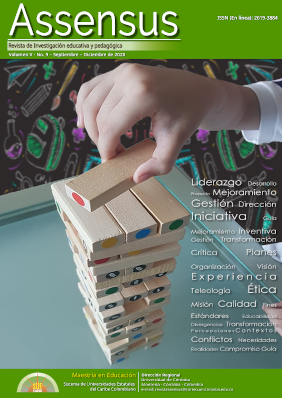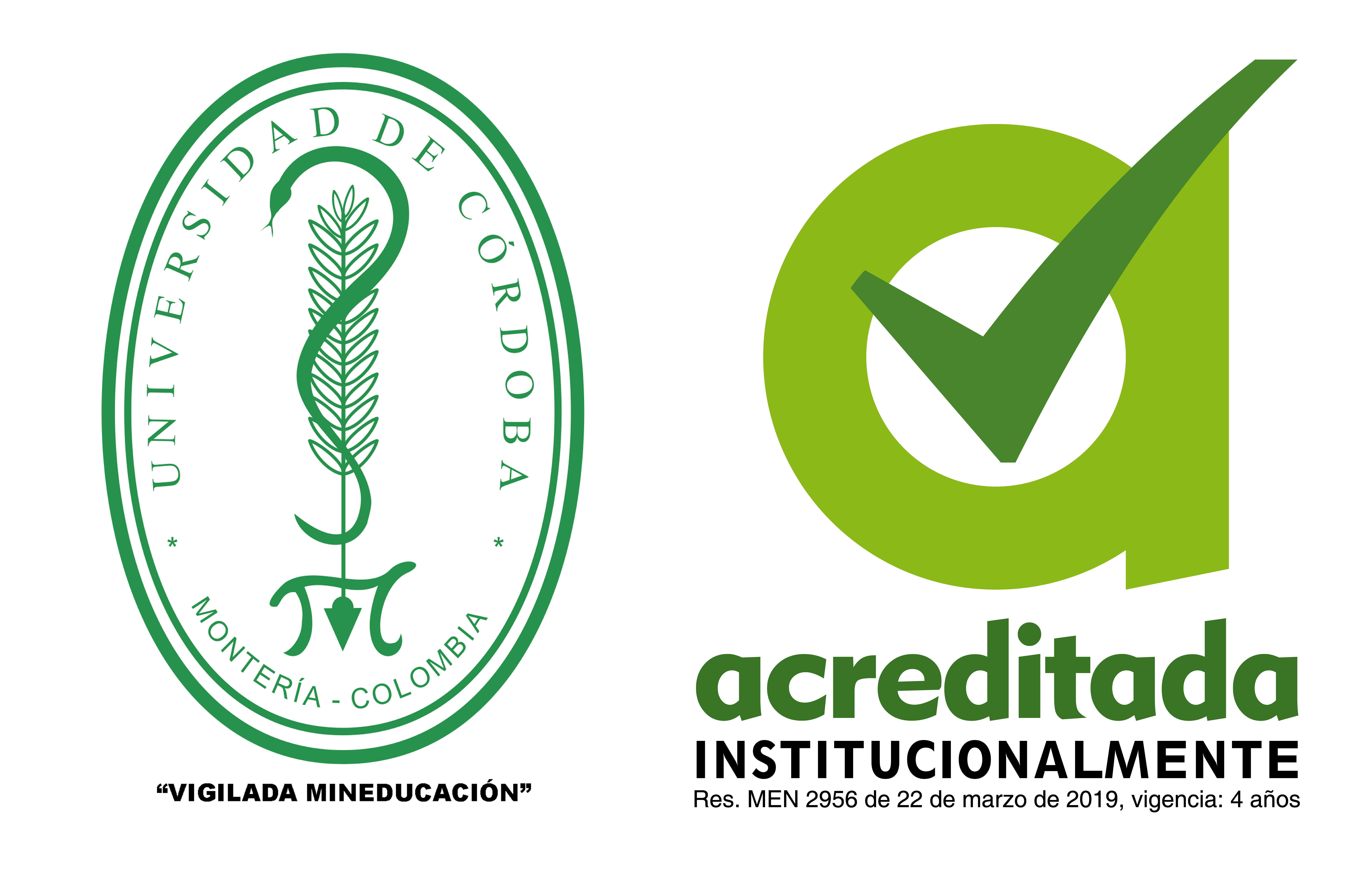Strategy "Educating my emotions" for the prevention and decrease of bullying in secondary basic students
Estrategia “Educando mis emociones” para la prevención y disminución del bullying en estudiantes de Básica Secundaria
The Assensus journal has a Creative Commons license. The citation, use and partial or total reproduction of the contents is authorized by citing sources. For more information, see https://creativecommons.org/licenses/by-sa/4.0/deed.en
Show authors biography
The purpose of this study was to analyze the incidence of the application of a social pedagogical strategy in the prevention and reduction of bullying in 8th grade students of the Marceliano Polo Educational Institution of the municipality of Cereté - Córdoba. The study is of qualitative approach and is framed within the case study design with a sample of 36 eighth grade students and 2 teachers. The instruments were the survey form, the interview form and the field diary. For the data analysis, a triangulation of the information was done, in other words, the interview, the surveys and the development of the social pedagogical strategy Ëducating my Emotions¨ were assembled to carry out a comprehensive study which showed students’ thoughts and teachers’ perceptions clearly. The results obtained were able to establish the characterization of the students against bullying which was in a high percentage in the Verbal and Social dimensions, in terms of the teachers' perception it was shown that they know about the problem of bullying but do not use prevention strategies Finally, the application of the emotional intelligence strategy contributed to improve the behavior and coexistence in the students, as well as to face better everyday and non-everyday situations.
Article visits 1266 | PDF visits
Downloads
- Acosta, R., & Moreno, L. (2015). Estrategias de convivencia escolar para la prevención del bullying en la Escuela Técnica “Los Magallanes” en el estado Carabobo (Bachelor's thesis).
- Andrés, M. (2014). Conductas de ciberacoso en niños y adolescentes. Hay una salida con la educación y la conciencia social. Educar, 50(2), 383-400.
- Azócar, R. (2015). La visión epistemológica de la educación. Documento online. https://www.aporrea.org/educacion/a207491.html
- Bisquerra, R., & Hernández, S. (2017). Psicología positiva, educación emocional y el programa aulas felices. Papeles del Psicólogo, 2017, vol. 38, num. 1, p. 58-65. https://doi.org/10.23923/pap.psicol2017.2822
- Calle, M., De Cleves, N., & Burgos, M. (2011). Incidencia de la inteligencia emocional en el proceso de aprendizaje. Nova, 9(15), 94-106.
- Caruana, A. (2005). Programa de educación emocional y prevención de la violencia - 2º ciclo de la ESO. Generalitat Valenciana, Conselleria de Cultura, Educació i Esport.
- Chester, M. Callaghan, A. Cosma, P. Donnelly, W. Craig, S. Walsh, M. Molcho. (2015). Cross-national time trends in bullying victimization in 33 countries among children aged 11, 13 and 15 from 2002 to 2010European Journal of Public Health, 25 (2) , pp. 61-64
- Colunga Santos, S., & García Ruiz, J. (2016). Intervención educativa para desarrollar competencias socioemocionales en la formación académica. Humanidades Médicas, 16(2), 317-335.
- De Oliveira, M.A. Silva, F.C. Mello, D.L. Porto, A.C. Yoshinaga, D.C. Malta. (2015). The causes of bullying: Results from the National Survey of School Health (PeNSE). Revista Latino-Americana de Enfermagem, 23 (2), pp. 275-282
- DeWalt, Kathleen M. & DeWalt, Billie R. (2002). Observación participante: Guía para trabajadores de campo. Walnut Creek, CA: AltaMira Press.
- Garaigordobil, M., Martínez-Valderrey, V., & Machimbarrena, J. M. (2017). Intervención en el bullying y cyberbullying: Evaluación del caso Martín. Revista de Psicología Clínica con Niños y Adolescentes, 4(1), 25-32.
- Gardner, H. (1998). Inteligencias múltiples. Paidós.
- Goleman, D. (2010). Inteligencia social: la nueva ciencia de las relaciones humanas. Editorial Kairós.
- Goncy, E. A., Sutherland, K. S., Farrell, A. D., Sullivan, T. N., & Doyle, S. T. (2015). Measuring teacher implementation in delivery of a bullying prevention program: The impact of instructional and procedural adherence and competence on student responsiveness. Prevention science, 16(3), 440-450.
- Hamodi Galán, C., & Jiménez Robles, L. (2018). Modelos de prevención del bullying:¿ qué se puede hacer en educación infantil?. IE Revista de investigación educativa de la REDIECH, 9(16), 29-50.
- Neisser, U. (2012). Percepción. Recuperado de: http://www. um. es/pguardio/documentos/percepción. pdf.
- Olweus, D. (1998). Conductas de acoso y amenaza entre escolares. Morata.
- Dictionary, O. (2013). Oxford dictionary. nd Performance. Accessed.
- Páez, A. (2013). Proyecto de Ley Orgánica de Prevención, Control y Sanción del Acoso, Intimidación o Violencia en los centros de estudio del Ecuador (Bullying). 20, 17-19.
- Previoces (2013). (Programa de intervención de la violencia en la convivencia escolar). Guía docente para prevenir la violencia escolar.
- Ramos, C. (2017). Los paradigmas de la investigación científica. Avances en psicología, 23(1), 9-17. https://doi.org/10.33539/avpsicol.2015.v23n1.167
- Román, M. & Murillo, J. (2011). Latin America: School bullying and academic achievement. Cepal Review, 104, pp. 37-53
- Stake, R. (1999). Investigación con estudio de casos. Morata.
- Stake, R. (2005). Investigación con estudio de casos. (3ra Ed.). Morata
- Yin, R. (1989). Case Study Research: Design and Methods. Sage.
- Zych, I. & Ortega-Ruiz, R. (2015). Scientific research on bullying and cyberbullying: Where have we been and where are we going. https://doi.org/10.1016/j.avb.2015.05.015
- Mora, A. (2014). Propuesta para la elaboración de un manual para la gestión de los conflictos estudiantiles. Gestión de la educación, 1-35.



